
Ever walked into a grandparent’s house and felt like you’d stepped into a time capsule? You know, the kind where everything has a ‘story’ and a dedicated spot, often leading you to wonder, ‘What *is* that even for?’ Well, buckle up, buttercups, because we’re diving deep into the fascinating (and sometimes hilarious) generational gap between Baby Boomers and Gen Z when it comes to household items.
It’s not about who’s right or wrong, but rather how much the world has transformed! Boomers grew up in an era defined by hands-on habits, physical objects, and a certain sense of permanence. Think about it: they didn’t have smartphones telling them everything, so they relied on tangible tools and established routines. Fast forward to Gen Z, and it’s a whole new ball game. We’re talking digital natives who value convenience, flexibility, and sustainability above all else, often making Boomer ‘essentials’ feel like relics from another planet.
This disconnect isn’t just about different tastes or a rebellious streak; it’s a full-on reimagining of what ‘home’ even means. The items Boomers consider absolutely crucial for a well-appointed home often strike younger generations as not just unnecessary, but downright burdensome. They’re relics from a time when people stayed put longer, entertained more formally, and believed deeply in the power of the ‘right’ tablecloth. We’ve rounded up 15 items that perfectly encapsulate this generational divide, starting with seven classic icons that Boomers still adore, but Gen Z? They’re giving them a hard pass. Let’s get into it!
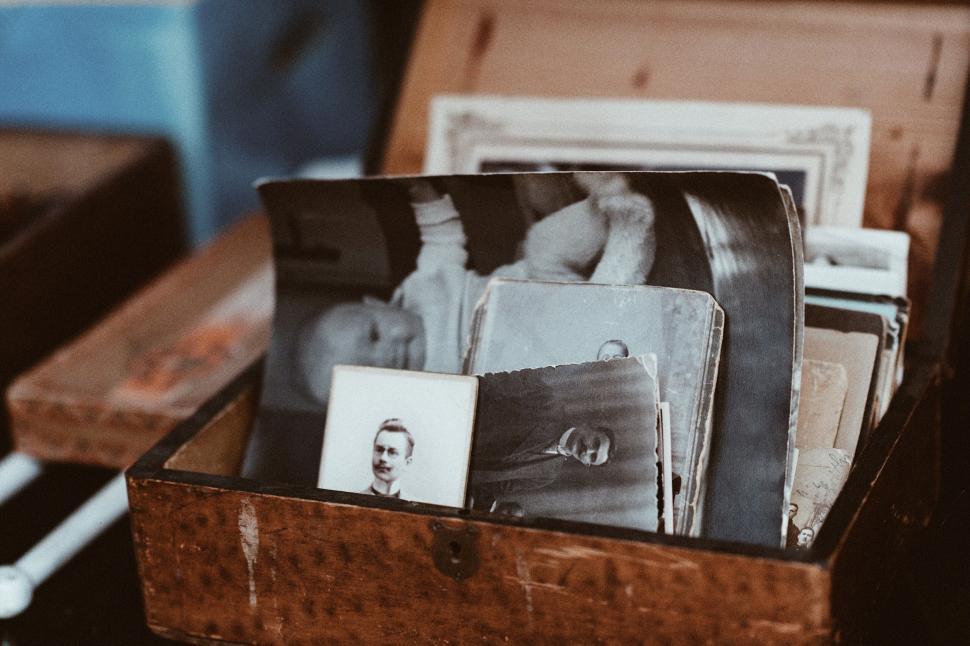
1. **Physical Photo Albums**You probably don’t keep physical photo albums like Boomers do, but for an older generation, these are absolute treasures. For Boomers, these albums aren’t just books with pictures; they’re tangible repositories of family history, filled with precious memories, milestones, and the faces of loved ones who have long since passed. They represent permanence and the importance of legacy, serving as proud displays that spark stories and conversations about the good old days.
Flipping through pages, feeling the texture of the photos, and even smelling the aged paper is part of a deeply nostalgic experience. These albums were meticulously put together, often with handwritten notes detailing dates and events, turning each book into a cherished heirloom. It’s about a slower, more deliberate way of archiving life’s moments, a ritual that brought families together to reminisce.
Today, for Gen Z, most of your photos live on your phone or in the cloud, making it quick to scroll through memories with a simple swipe. The concept of printing pictures and then organizing them into bulky albums feels incredibly outdated, like an unnecessary chore when everything can be digital and instantly shared with friends and followers online. Who has the time or the space for that extra hassle?
This isn’t about valuing memories less, but rather about a radically different approach to how we capture and preserve them. While Boomers might find comfort in the physical presence of these albums, for Gen Z, they might seem a bit cumbersome and out of sync with a lifestyle that prioritizes immediate access and minimal clutter. The digital age has simply rendered the physical album a charming, but ultimately bygone, form of memory keeping.
Even though physical copies can act as a great conversation starter, sparking stories and memories, as a study by Chatbooks and HP found that “around 84% agreed that it sparks telling stories and memories for them,” Gen Z still tends to store memories in cloud albums or social media pages, with some rarely having physical copies of family photos at all.
Read more about: The Enduring Enigma: Unpacking Keanu Reeves’ Life of Purpose Beyond the Pursuit of Riches
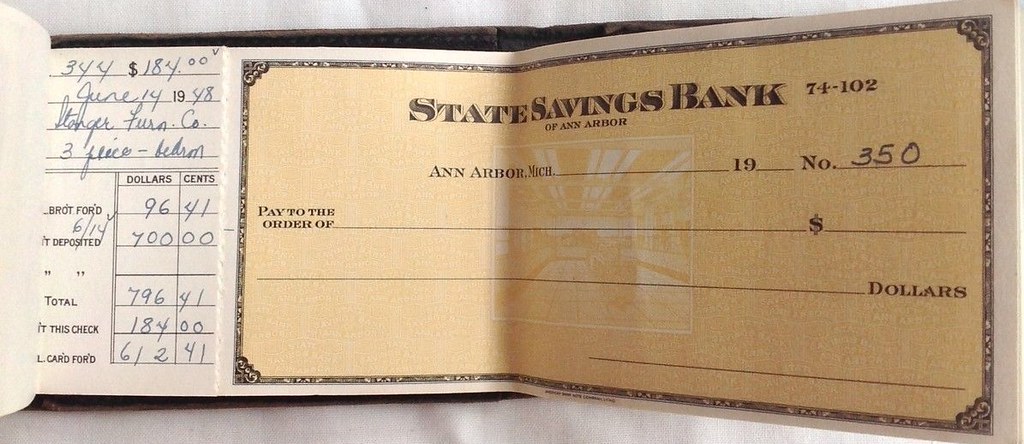
2. **Paper Checkbooks**If you’ve ever seen a Boomer meticulously balance their checkbook, you know it’s not just about paying bills; it’s a deeply ingrained habit and a practice that provides a profound sense of control over their finances. They prefer the physical feel of writing out checks, the tangible act of documenting each transaction, which offers a clear and immediate record of money going in and out.
For many older Americans, a paper checkbook is also kept as a reliable backup, a failsafe in case electronic systems hit a snag. This approach stems from a time when digital payment options were either non-existent or unreliable, making the humble checkbook a cornerstone of financial security and organization. It’s a testament to a world where physical documentation was paramount.
Now, let’s talk about Gen Z. You probably won’t see anyone in your cohort carrying these old-school financial tools, and honestly, why would you? Digital payments, banking apps, and contactless transactions are the norm. They’re faster, easier, and seamlessly integrated into your daily tech-driven life, making a bulky paper checkbook feel like something pulled straight from a history book.
The idea of writing out a check, mailing it, and waiting for it to clear seems incredibly inefficient and time-consuming to a generation that expects instant gratification and real-time updates for everything, including their money. So, while Boomers might appreciate the routine and sense of control, for Gen Z, paper checkbooks are simply an outdated and unnecessary piece of financial paraphernalia.
“What matters is staying in control of your finances—whether it’s with a pen or an app,” as one observation keenly puts it, but the method of control has undeniably evolved. Gen Z’s comfort with digital platforms means they manage their money with swipes and taps, a far cry from the physical ledger of their Boomer counterparts.
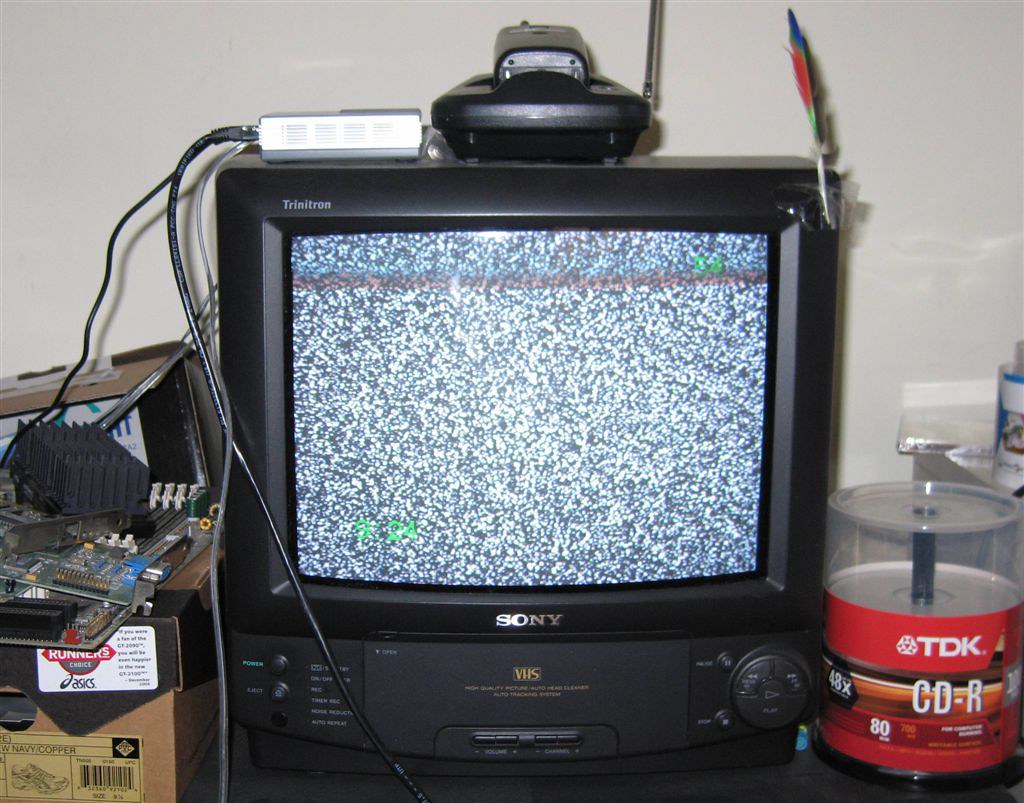
3. **Cable TV Subscriptions and Their Bulky Boxes**There’s a significant chunk of Boomers who are still holding tight to their cable TV subscriptions, even with an endless sea of cheaper, more flexible streaming options swirling around them. For this generation, cable isn’t just about watching shows; it’s about a sense of comfortable familiarity, the reliability of a steady connection, and the comforting routine it brings. Shows start at a certain time, and the act of flipping channels becomes a ritualistic part of unwinding.
This commitment to cable often goes hand-in-hand with the clunky cable boxes that, for Gen Z, might as well be ancient artifacts. Boomers were the generation that grew up with “antique televisions with antennas directly installed into them,” making watching TV more of a “project that they occasionally fixed when things went wrong, like losing signal.” The cable box became an evolution of that, offering a more reliable signal and a structured programming guide.
But for Gen Z? The concept of a cable box feels about as relevant as a rotary phone. You grew up with the effortless ease of streaming services, where pushing a button on a device instantly brings up whatever you want, whenever you want it. The idea of paying for hundreds of channels you don’t watch, or being beholden to a broadcast schedule, is frankly baffling.
The numbers don’t lie: in 2021, a staggering “56% of cable and satellite subscriptions dropped among U.S. households, with the main reason being that they can access the same content online.” This dramatic shift underlines how streaming has utterly replaced traditional cable TV for younger generations, who prioritize on-demand options that fit their unpredictable schedules and specific interests. For Gen Z, the future of entertainment is fluid, not fixed to a bulky box.
Cable offers a “sense of structure and familiarity—shows start at a certain time, and flipping channels becomes part of the experience,” which many Boomers appreciate. Yet, this “kind of rhythm and the feeling of sitting down for TV without scrolling endlessly” is precisely what Gen Z escapes through personalized streaming, showcasing a fundamental difference in how each generation approaches their downtime.
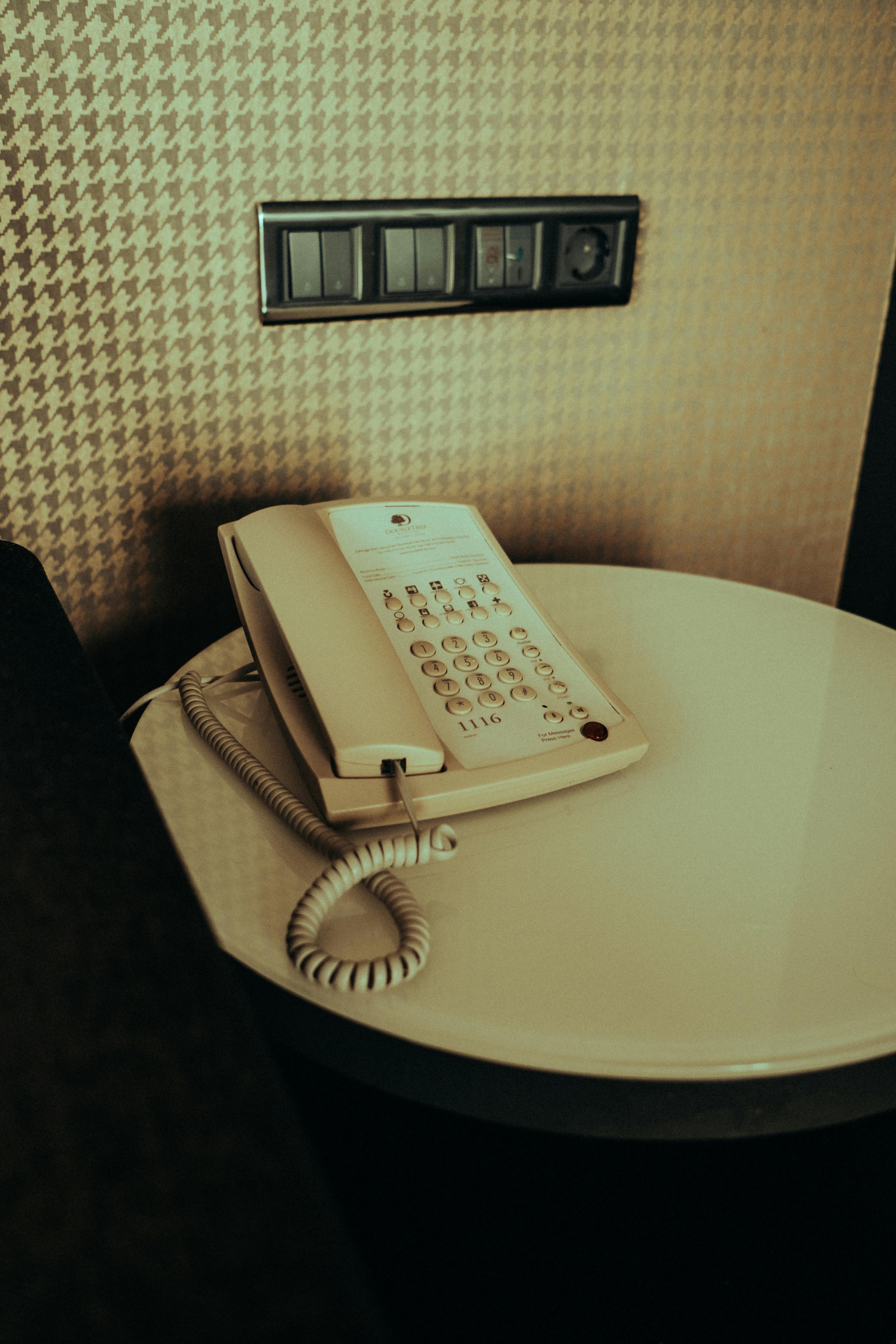
4. **Landline Phones (and the Furniture Designed to Hold Them)**Take a moment to imagine a home without a smartphone in every pocket. Hard to do, right? Yet, for Boomers, the landline phone was (and often still is) a fundamental fixture. They grew up with it as a regular part of their home, valuing its steady connection, its familiar setup, and perhaps most importantly, its perceived reliability for emergencies. “But what if there’s an emergency?” Boomer parents might still ask, as if cell towers routinely fail while landlines remain mysteriously operational.
This dedication to maintaining a landline “just in case” reveals a deep generational difference in trust and technology. It’s a relic from a time when having a dedicated, unmoving line was the pinnacle of communication and safety, offering a sense of dependability that didn’t rely on battery life or a strong signal. For many, it’s about habit and a sense of permanence in a rapidly changing world.
For Gen Z, landlines feel not just outdated, but genuinely unnecessary. Your phone is your smartphone; it’s your calendar, your camera, your news source, and, oh yeah, it makes calls too. The idea of paying for a separate home phone service, especially one tethered to a wall, is simply perplexing. Why pay for two phone services when one works everywhere and does so much more?
What’s even more amusing are the archaeological artifacts that accompanied landlines: those special telephone tables, phone book storage nooks, and those little seats with attached side tables specifically engineered for long, gossipy conversations. Gen Z sees these as bizarre relics from a time when phones were furniture, not pocket-sized supercomputers. For you, the landline represents a broader generational split about redundancy versus efficiency.
“Landlines offer a kind of reliability that doesn’t depend on battery life or a strong signal,” a point Boomers readily appreciate, “especially for emergencies or longer conversations.” However, “Gen Z, growing up with smartphones that do everything in one device, simply never needed to form that habit,” illustrating the profound shift in communication tools and preferences across generations.

5. **Printed Newspapers and Their Dedicated Magazine Racks**There’s a certain charm, or perhaps just stubborn habit, for Boomers when it comes to printed newspapers. They often prefer the physical feel of paper in their hands, the satisfying rustle of pages, and the established routine of settling down with a physical copy to catch up on the day’s events. For them, it’s not just about the news; it’s an experience, a tangible connection to the world around them that digital screens just can’t quite replicate.
This attachment to print media extends to magazines, with many Boomer homes featuring magazine racks, newspaper holders, and even special tables with built-in storage for reading materials. These are architectural solutions to problems Gen Z has, quite frankly, never encountered. The idea of saving physical magazines, of needing furniture to organize newspapers, or even having print subscriptions arrive regularly enough to require dedicated storage solutions—it all feels like preparing for activities from an alternate timeline.
For Gen Z, this approach to consuming news and entertainment is as foreign as dial-up internet. Your reading happens on screens, updated in real-time, requiring no physical storage beyond your phone’s battery life. Digital news sources are faster, often free, and infinitely more convenient. You probably get your updates online or through apps, making print seem not just outdated but also incredibly inconvenient and inefficient.
The magazine rack, in particular, illustrates this generational chasm. Why own furniture specifically designed to organize media that lives better in the cloud or is consumed ephemerally? The few physical documents Gen Z can’t avoid owning get shoved into a single folder, if that. This isn’t carelessness; it’s an entirely different relationship with documentation and media consumption, driven by the instant access and portability of digital platforms.
The dedicated storage for print media underscores a lifestyle where information consumption was a more deliberate, physical act. “Gen Z’s reading happens on screens, updated in real-time, requiring no physical storage beyond phone battery life,” perfectly capturing the shift from tangible paper to intangible pixels and the spatial freedom it affords.
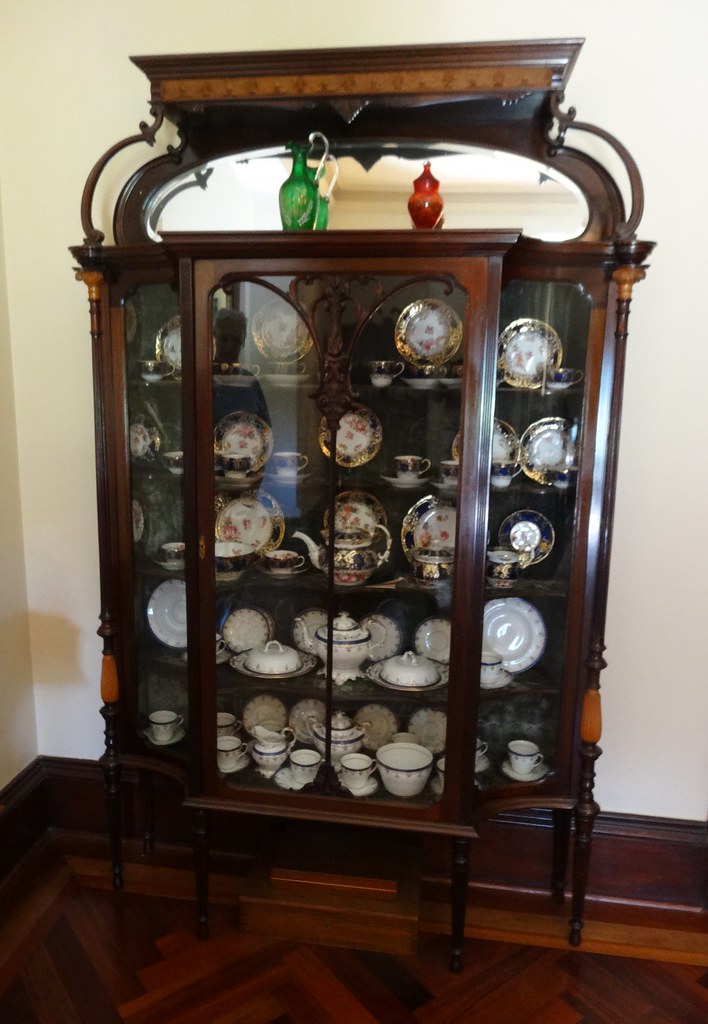
6. **Formal Dinnerware Sets and the Grandeur of Display Cabinets**Ah, the “good dishes.” Every Boomer home seems to have them, tucked away in an elaborate display cabinet, waiting patiently for those rare, special occasions. These formal dinnerware sets, often featuring fine china, multiple plates for various courses, and matching cups, aren’t just tableware; they’re seen as precious heirlooms, representing tradition, order, and a sense of completeness. For Boomers, investing in an entire matching set was a sign of good taste, financial stability, and having “made it” in life, stable enough to require special dishes for those grand, infrequent gatherings.
The formal display cabinet itself—whether housing china, crystal, or simply the “nice” dishes—stands as a monumental symbol of this generational divide. It represents arrival: a life substantial enough to dedicate an entire piece of furniture to storing items used, perhaps, three times a year. It’s a monument to formal entertaining, to a meticulous approach to hospitality that feels almost ceremonial.
Now, let’s look at Gen Z’s kitchen. You’ll likely find simpler, versatile dishes that don’t demand careful handling. Easy-to-use and dishwasher-safe options are the practical champions. The very concept of “good dishes” versus “everyday dishes” implies a level of formal entertaining that feels like historical reenactment to a generation where most friend gatherings involve takeout containers on the coffee table. Why bother with separate dish hierarchies when your dining table is often your desk?
Gen Z’s dishes tell a different story altogether: mismatched mugs collected from thrift stores, plates sourced from flea markets, each piece chosen for individual charm rather than conformity. The aesthetic isn’t chaos; it’s curation, reflecting personality and creativity. Why buy a matching set when you can build a collection that actually reflects *you*? Plus, the environmental factor can’t be ignored: why own two sets of everything when one eclectic, functional collection works perfectly fine and saves space in apartments they can barely afford? The display cabinet often represents peak consumer excess to a generation acutely aware of climate change and resource depletion.
“Owning fine china means honoring traditions and preserving moments that feel special,” and Boomers view these sets as “more than dishes—they’re memories and milestones in physical form.” Conversely, “Gen Z often prefers versatile pieces that match their smaller spaces and more casual routines,” showing a clear pivot from inherited grandeur to practical, personalized living.
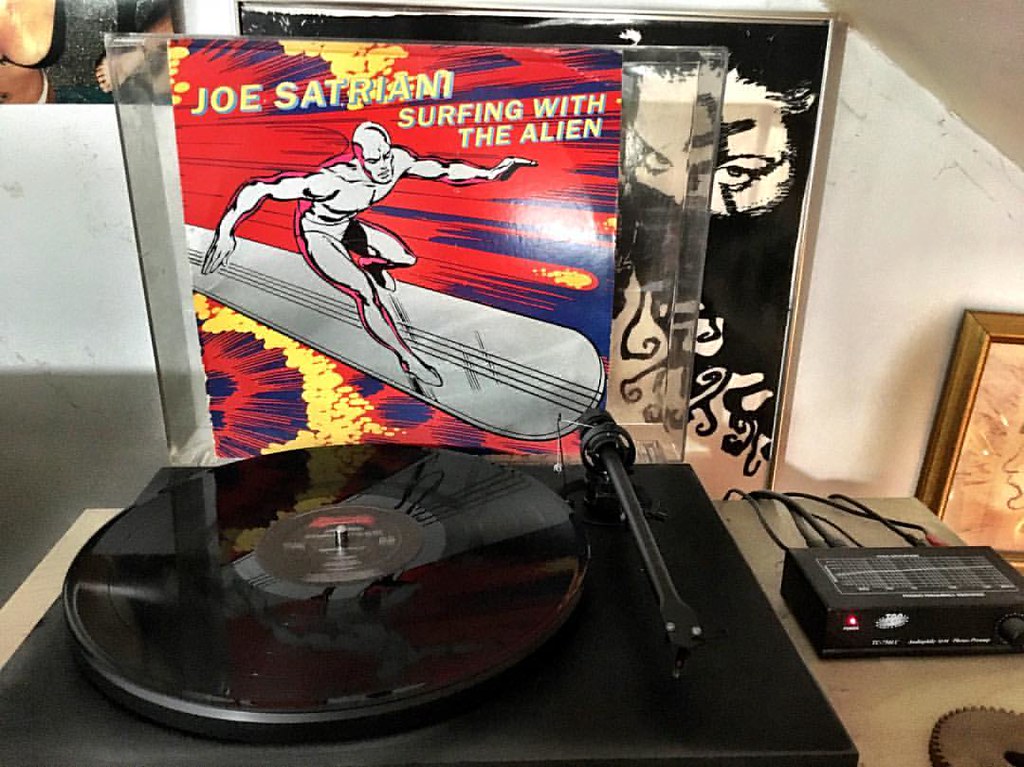
7. **Vintage Vinyl Records**Step into a Boomer’s living room, and you might just stumble upon a collection of vintage vinyl records, cherished like precious artifacts. For many older Americans, these aren’t just discs; they’re a gateway to a bygone era of music enjoyment. They appreciate the warm, rich sound that only vinyl can deliver, and the entire ritualistic experience of selecting an album, carefully placing it on the turntable, and dropping the needle. It’s an immersive, tactile connection to their favorite artists and songs.
This adoration stems from a time when music consumption was a deliberate act. The album art, the liner notes, the physical act of engaging with the music—it all contributed to a much deeper listening experience. Boomers associate these records with specific memories, concerts, and moments in their lives, making each record a personal piece of history worth saving and enjoying.
Now, let’s flip the record (pun intended!) to Gen Z. For you, streaming music is the undisputed king. It’s faster, easier, and provides instant access to virtually every song ever recorded, all from a device that fits in your pocket. The idea of owning bulky, fragile vinyl that requires special equipment and storage can seem incredibly outdated and inconvenient when digital playlists offer unparalleled flexibility and portability.
While some younger people do get curious about records, appreciating the “throwback” aesthetic or a niche appeal, it’s largely a novelty rather than a primary mode of listening. The practicality and convenience of streaming usually win out. So, while Boomers might hold onto their vinyl as a testament to how music used to be enjoyed, for Gen Z, it’s often an interesting antique, but not a practical part of their daily soundtrack.
“You probably notice how Boomers hold onto their vinyl records like treasures. They appreciate the warm sound and the whole experience of playing them.” However, for Gen Z, “streaming music feels faster and easier,” highlighting the convenience-driven preference that guides their entertainment choices, with vinyl sometimes serving as a “throwback to how music used to be enjoyed.”
Alright, so we’ve already taken a hilarious (and sometimes painfully accurate) stroll through some of the classic Boomer household staples that make Gen Z collectively scratch their heads. From physical photo albums to the comforting crackle of vinyl, it’s clear that what one generation cherishes, another sees as… well, a bit extra. But trust us, the treasure trove of generational divides doesn’t stop there!
Get ready to dive into eight more iconic items that spark major nostalgia for older generations but leave Gen Z wondering if they’ve stumbled into an antique shop. This isn’t just about old versus new; it’s a full-on cultural commentary on how our priorities, spaces, and even our definitions of ‘home’ have completely transformed. So, let’s keep this whirlwind tour going and unravel the mysteries of these next eight beloved Boomer essentials!
Read more about: Linda Ronstadt’s ‘Prisoner in Disguise’ at 50: An Emotional Look Back at a Superstar’s Defining Era

8. **Old Recipe Books**Tucked away in kitchen drawers and proudly displayed on bookshelves, you’ll often find old recipe books that baby boomers inherited from their parents or painstakingly built themselves. These aren’t just collections of instructions; they’re worn, splattered volumes that serve as tangible heirlooms, filled with handwritten notes about classic family dishes made from scratch. For Boomers, these sentimental recipes are a vibrant way of keeping family traditions alive, connecting them to generations past through the simple act of cooking.
There’s a deep emotional attachment to these books. The act of flipping through pages, stained with memories of countless family meals, offers a connection that digital screens simply can’t replicate. It’s about more than just the ingredients; it’s about the stories, the effort, and the legacy that each dish carries, making these books cherished artifacts in any Boomer kitchen.
Now, let’s talk about Gen Z’s approach to cooking, and it’s a whole different flavor profile! Rather than flipping through heavy, dusty pages, you simply turn to TikTok, YouTube, or other food blogs for the recipes you’re looking for. The idea of relying on a physical book, especially one that might not even have a picture of the finished dish, feels incredibly inefficient and out of sync with instant-access culture.
In a world where new recipes go viral daily and cooking tutorials are just a tap away, old recipe books might seem like charming relics, but not necessarily practical tools. While a study from Pennsylvania State University actually found that 41% of participants who used cookbooks were able to cook two more meals per week compared to non-cookbook users, Gen Z often finds digital platforms more convenient and visually engaging for their culinary adventures. So, while Boomers might find comfort in tradition, Gen Z finds efficiency in innovation.
Read more about: Beyond the Shadows: Unearthing the Obscure Sci-Fi and Fantasy Novels Destined to Be the Next Big Action Franchise
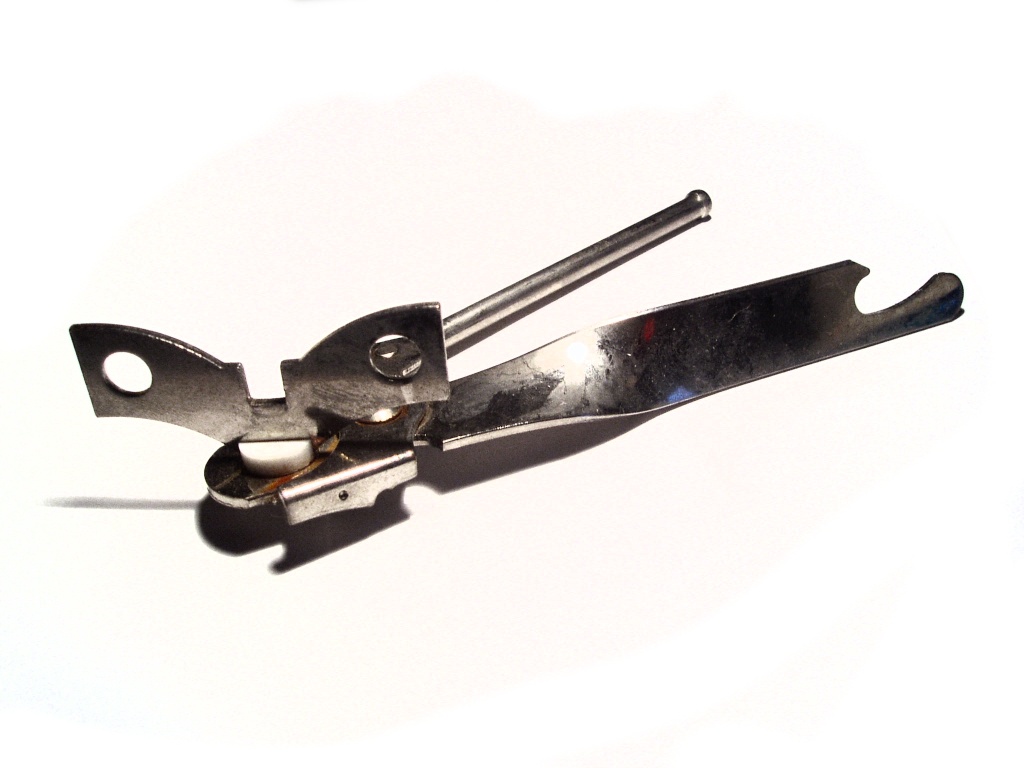
9. **Manual Can Openers**Ah, the humble manual can opener. For many Boomers, this is less an appliance and more a trusted, essential kitchen tool that has stood the test of time. Manual can openers are simple, long-lasting, and don’t require power—just a bit of practice and elbow grease. Boomers rely on them as a dependable staple that always gets the job done, a true testament to practical, no-nonsense functionality in the kitchen.
They appreciate the sheer reliability of a tool that doesn’t need batteries, doesn’t need to be plugged in, and generally won’t break down on you. This reliance stems from an era where appliances were often built to last, and self-sufficiency in the kitchen was a valued skill. It’s a classic example of a “buy it for life” mentality, a tool that performs its single function without fuss.
Gen Z, however, lives in a world where convenience is king, and packaging has evolved dramatically. You’re used to pop-tops or electric gadgets that do the heavy lifting with minimal effort. The idea of laboriously cranking a manual can opener might not just seem unnecessary, but a bit antiquated in a kitchen filled with smart devices and pre-packaged meals.
Many younger people might not even own a manual can opener, finding them obsolete in a world of increasingly user-friendly food containers. As one observation puts it, “Neither choice is wrong—it’s just about what kind of tools fit your habits.” For Gen Z, those habits lean heavily towards streamlined processes, making the manual can opener a curious relic rather than a kitchen essential.
Read more about: Beyond the Lock: 14 Essential Home Safety Upgrades You’ll Be Grateful For

10. **Clocks on the Wall**Ever noticed how many Boomer homes proudly display clocks on the wall, often in multiple rooms? For this generation, analog wall clocks were not just decorative; they served as a reliable, tangible way to tell time for big events and daily scheduling, especially since they didn’t carry smartphones around to let them know when it was time for something. The closest they had were grandfather clocks that chimed every hour, making time-telling a distinct and visible part of their daily routine.
A traditional alarm clock, often sitting on a bedside table, was all about focus – it was there for one job and did it reliably, allowing Boomers to wake up without being tied to their phones first thing in the morning. This reliance on physical timepieces reinforced a sense of structure and routine, where time was marked by visible hands and audible chimes.
Gen Z’s home decor priorities, however, starkly differ. Digital natives favor sustainable, tech-integrated interiors over traditional items, meaning they simply don’t need items like wall clocks. You already have clocks on your smartphones, smartwatches, computers, and even your microwave! Spending money on an analog clock for your home feels like an unnecessary expense, especially when every device around you already tells the time with precision.
For Gen Z, who grew up with smartphones where alarms are built-in and adjustable with just a swipe, the separate wall clock or bedside alarm clock feels redundant. Your aesthetic often leans towards minimalism, and adding a purely functional item that’s already integrated into your tech just doesn’t compute. “Whether it’s digital or analog, it’s about finding a wake-up routine that works for you,” but for Gen Z, that routine is undeniably digital.
Read more about: The Definitive Guide: 14 Life-Changing Tech Gadgets Under $100 That Deliver Exceptional Value and Innovation
11. **Doilies and Table Runners**Nothing quite signals “Boomer home” like surfaces adorned with smaller, decorative surfaces—think doilies under lamps, runners on tables, and placemats under placemats; it’s textiles all the way down! Boomers were notorious for keeping their dining room tables decorated with doilies and table runners, viewing them as both a formality and an essential component of the mid-century home aesthetic. For them, it was about creating a homely, inviting atmosphere, especially during precious family moments and memorable meals.
These fabric accents were more than just pretty trimmings; they were carefully chosen, regularly laundered, and mysteriously essential to proper home presentation. They added an extra layer to the decor, showcasing meticulous attention to detail and a commitment to a certain kind of refined domesticity that made a house feel warm, put-together, and ready for any occasion.
Gen Z’s relationship with table surfaces is far more straightforward: they’re for putting things on, and perhaps some decorative elements that serve a clear purpose. The idea of covering functional surfaces with decorative items that must be constantly moved, cleaned, and stored strikes them as creating work for the sake of work. Your aesthetic leans toward clean lines and multipurpose furniture, with less emphasis on purely ornamental fabric.
For Gen Z, doilies and table runners feel distinctly unnecessary and overly ornate. Why bother with intricate lace or delicate fabric when modern interior design trends favor simplicity, practicality, and ease of maintenance? Plus, the environmental and practical considerations merge here: why generate extra laundry or own things whose sole purpose is to protect other things you also don’t necessarily need? It’s a clear generational shift from ornate formality to minimalist utility.

12. **Filing Cabinets Full of Paper Records**Step into a Boomer’s home office, and you’re likely to find filing systems that would impress a mid-century FBI agent. We’re talking about tax returns from 1987, instruction manuals for appliances long dead, and warranty cards for items that couldn’t possibly still be under warranty—all carefully organized in hanging folders with typed labels. Boomers tend to prefer having physical copies on hand, especially for important paperwork, giving them a profound sense of peace of mind and control.
For this generation, the act of maintaining physical files is deeply ingrained, stemming from a time when digital alternatives were nonexistent or unreliable. These cabinets are seen as reliable fortresses for important documents, ensuring that records are always accessible, tangible, and safe from potential digital glitches or hacks. It’s a methodical approach to organization that emphasizes permanence and physical security.
Gen Z, however, looks at filing cabinets and often sees expensive, bulky furniture for storing things that live far better in the cloud. Bank statements? Online. Tax documents? PDF. Instruction manuals? Google it. The few physical documents they can’t avoid owning often get shoved into a single folder marked “important stuff” and promptly forgotten, accessible only by a desperate rummage.
This isn’t carelessness; it’s an entirely different relationship with documentation, driven by the digital age. When every important document can be accessed from your phone or laptop in seconds, maintaining elaborate physical filing systems feels like preparing for an apocalypse where the internet dies but filing cabinets somehow survive. “Both approaches aim for clarity—just through systems shaped by their time,” but for Gen Z, efficiency means digital.

13. **Artificial Flowers and Their Dedicated Vases**Walk into almost any Boomer home, and you’ll likely discover at least one arrangement of fake flowers, proudly displayed in vases specifically purchased for these artificial blooms. These floral simulacra bring a sense of elegance and natural beauty without the hassle of watering or wilting. For many Boomers, who often possess green thumbs and enjoy gardening, having fresh flowers around is an easy way to bring the beauty of the outdoors into their homes, and artificial versions offer a year-round, low-maintenance alternative.
These arrangements aren’t just thrown together; they often coordinate with the seasons, swapped out with other sets from storage systems that can be more complex than some small businesses’ inventory management. Similarly, potpourri, those fragrant mixes of dried petals and spices, offers another decorative accent that older people use to make their homes smell great, all without the fleeting nature of real blooms.
Gen Z’s plant philosophy, however, is a stark contrast: it’s real or nothing. You either commit to keeping something alive and embrace the full emotional journey of nurturing a plant, or you acknowledge that you’re just not a plant person. The uncanny valley of artificial flowers—trying to bring nature indoors while simultaneously rejecting actual nature—often strikes younger generations as the worst of both worlds.
When Gen Z wants plants, they want the real experience: the satisfaction of seeing something thrive under their care, or even the humorous horror of accidentally killing it. Artificial flowers feel like cheating at a test no one asked you to take, a superficial attempt at beauty without the genuine connection to nature that defines their preferences. Plus, why spend money on something that requires dusting but never brings life to a room?
Read more about: When the Camera Stopped Rolling: 9 Visionaries Whose Greatness Echoed Long After They Were Gone
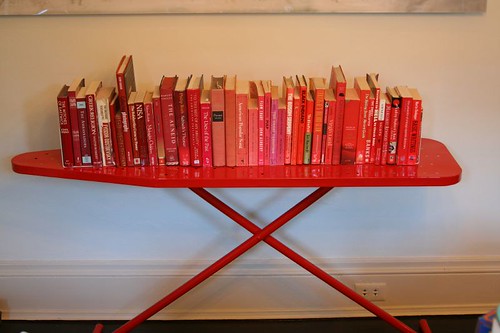
14. **Dedicated Ironing Boards and Their Architectural Accommodations**Boomer homes often feature a full-sized ironing board, either with its own designated spot in a closet, a clever pull-down station, or sometimes even built-in storage. For Boomers, ironing isn’t just an activity; it’s an institution, a meticulous ritual requiring its own infrastructure and specialized tools. Maintaining wrinkle-free clothing was a core part of presenting oneself professionally and properly, and the ironing board was the central command center for this essential task.
This dedication to a smooth, crisp wardrobe stems from an era where self-presentation was paramount, and clothes were often made from materials that wrinkled easily. The ironing board and the act of ironing represented a commitment to neatness, discipline, and a certain standard of domestic care that was passed down through generations. It was a skill, a chore, and a point of pride, all rolled into one.
Gen Z, on the other hand, often owns, at best, a travel steamer. More likely, you might use a hair straightener for emergency collar touch-ups or rely on the time-honored technique of hanging clothes in the bathroom during a hot shower to de-wrinkle them. Your clothing choices strategically avoid items requiring intensive ironing, prioritizing fabrics that are naturally wrinkle-resistant or styles that embrace a more casual, lived-in look.
The ironing board represents a broader generational divide about self-presentation and time allocation. When your video calls only show you from the chest up, and “business casual” means “has sleeves” (and sometimes even a hoodie!), maintaining a perfectly wrinkle-free wardrobe feels like optimizing for a world that no longer exists. For Gen Z, convenience and comfort often trump the painstaking effort of a perfectly pressed shirt, showcasing a dramatic shift in lifestyle and priorities.
So there you have it, folks! Another deep dive into the fascinating, sometimes baffling, world of generational household items. The gulf between what Boomers consider absolutely essential and what Gen Z actually uses isn’t really about laziness, lower standards, or a lack of appreciation for quality. It’s about fundamentally different life patterns, economic realities, and a reimagining of what ‘home’ truly means.
When you’re renting instead of owning, when you’re moving cities for work instead of staying put for decades, and when your social life happens in public spaces or online rather than formal dining rooms, of course, your priorities for household items are going to shift dramatically. These rejected items tell a powerful story about changing values: experiences over possessions, flexibility over formality, and a heightened environmental consciousness over conspicuous consumption. They also reveal how much of what we consider “essential” is often just a habit, passed down through generations until someone finally has the audacity to ask, “Wait, why do we need this again?” It’s a brave new world for home goods, and honestly, it’s pretty cool to see how each generation leaves its own unique imprint on the spaces they call home.



